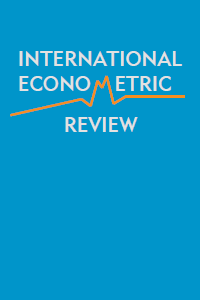Demand Deficiency and Inflation in the G7 Countries
Demand Deficiency and Inflation in the G7 Countries
In this paper, we analyze the relationship between nominal and real GDP growth for G7 countries for the period 1971 – 2018. A visual inspection of the data indicates the presence of a threshold, above which the structure of the relationship between nominal and real GDP growth rates changes from a positive one to a flat one. Moreover, the volatility of real growth is observed to be higher at high rates of nominal GDP growth. We first test for the presence of a two regime non-linearity by using the Sup F test of Andrews (1993). Due to the presence of heteroskedasticity we also apply the Sup MZ test of Ahmed et al. (2017). Both tests operate under an unknown change point and the latter also allows for
heteroskedasticity. The results of the tests point to the presence of a ‘demand deficiency ’regime for low nominal demand growth rates and to a ‘harmful inflation ’regime for higher nominal GDP growth rates, these results have strong implications for guiding recent policy discussions on nominal GDP targeting.
Keywords:
Growth, Inflation, Macroeconomic Policy, Unknown Structural Change Tests, Nominal GDP Targeting, Growth, Inflation, Macroeconomic Policy, Unknown Structural Change Tests Nominal GDP Targeting, ,
___
- Ahmed, M., G. Haider and A. Zaman (2017). Detecting structural change with heteroskedasticiy, Communications in Statistics-Theory and Methods, 46(21), 10446-10455.
- Andrews, D.W. (1993). Tests for parameter instability and structural change with unknown change point, Econometrica, 61(4), 821-856.
- Barro, R. J. (1991). Economic growth in a cross section of countries, The Quarterly Journal of Economics 106 (2), 407-443.
- Bruno, M. and W. Easterly (1996). Inflation and Growth: In Search of a Stable Relationship, The Federal Reserve Bank of St. Louis Review, 78 (3), 139-146.
- Chen, H. (2020). Nominal GDP targeting, real economic activity and inflation stabilization in a new Keynesian framework, The Quarterly Review of Economics and Finance, 78, 53-63.
- Eichenbaum, M., N. Jaimovich and S. Rebelo (2011). Reference prices, costs, and nominal rigidities, American Economic Review, 101(1), 234–62.
- Fischer, S. (1993). The Role of Macroeconomic Factors in Growth, Journal of Monetary Economics, 32(3), 485-512.
- Forbes, K, J Gagnon and C Collins (2021). “Low Inflation Bends the Phillips Curve around the World: Extended Results”, CEPR Discussion Paper 16583.
- Frankel, J. (1995). The Stabilizing Properties of a Nominal GNP Rule, Journal of Money, Credit and Banking, 27(2), 318-334.
- Frankel, J. (2013). “Nominal-GDP targets, without losing the inflation anchor,” in Richard Baldwin & Lucrezia Reichlin, eds., Is Inflation Targeting Dead: Central Banking After the Crisis (Centre for Economic Policy Research: London), 90-94.
- Frankel, J. (2014). Nominal GDP Targeting for Middle-Income Countries, Central Bank Review, (Central Bank of the Republic of Turkey) 14(3), 1-14.
- Golosov, M. and R. E. Lucas Jr (2007). Menu costs and Phillips curves, Journal of Political Economy, 115(2), 171–199.
- Kehoe, P. and V. Midrigan (2015). Prices are sticky after all, Journal of Monetary Economics, 75, 35–53.
- Levy, D., M. Bergen, S. Dutta and R. Venable (1997). The magnitude of menu costs: direct evidence from large US supermarket chains, The Quarterly Journal of Economics, 112(3), 791–824.
- Mankiw, N.G. (1985). Small Menu Costs and Large Business Cycles: A Macroeconomic Model of Monopoly, The Quarterly Journal of Economics, 100(2), 529–538.
- Senoussi, H. (2021). Variable Selection: An Application of the Random Forest Model to Barro Growth Regressions, International Econometric Review, 13(1), 4-23.
- Stevens, L. (2020). Coarse pricing policies, The Review of Economic Studies, 87(1), 420–453.
- ISSN: 1308-8793
- Başlangıç: 2009
- Yayıncı: Ekonometrik Araştırmalar Derneği
